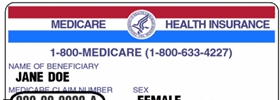Medigap pricing methods can be categorized in one of three ways (as found on page 17 of the Choosing a Medigap policy booklet) – attained-age rated, issue-age rated, and community-rated. These differences are often discussed by insurance companies and agents, so it is important to understand what the terms mean, and more importantly, what they may mean to your Medigap rates in the future after you choose a plan.
Attained-age Medigap rates are based on your current age (i.e the age you have “attained”) and rates typically would go up as you get older based on your age or when you reach a birthday. Plans that are rated in this way will typically have lower rates initially when you sign up for a plan and will represent some savings (often significant savings) on the front end.
Issue-age Medigap rates are based on your age at the time that the policy is issued. Rates will be lower if you buy when you are younger. Premiums still go up over time, but it is just not based on your age. Instead, premium increases are based on inflation, claims experience and other factors.
Community-rated Medigap rates are based on the “community” (a certain geographic area) and are typically the same for everyone within that “community”, regardless of age. Just like issue-age rated plans, premiums still go up over time, just not based on your age. Instead, they go up for inflation and claims experience of everyone within that “community”.
So, what do Medigap pricing methods mean to you? First of all, a few facts about the different rating methodologies and things to keep in mind.
- All Medigap rates are going to go up periodically. Most (regardless of Medigap pricing method) go up each year.
- In some states, the vast majority of plans are attained-age rated, with only 1-2 exceptions to that.
- In other states (for example, Georgia Medigap plans), the state restricts the companies to offer plans rates only with certain rating methodologies (i.e. no attained age in GA).
- It is important to also consider the savings on attained-age plans. For example, if you can save $1000+ a year for the first 10 years of an attained-age plan, even if the rate eventually surpasses an issue-age plan, your already-pocketed savings on the front end are so significant, that may not matter.
- Lastly, and most importantly, keep in mind that you can always change Medigap plans at any time and for any reason. In some states (for example: CA, OR, NY), this is a “guaranteed issue” right with no underwriting. In other states, you may have to answer general medical questions to be eligible to change. But in most cases, you can change plans to a lower-priced plan if your rate has gone up significantly.
Overall, it is advisable to have the assistance of an independent broker who can give you information about both current rates and typical future rates (i.e. history of rate stability) so you can make an informed choice on which company/plan is going to be best for you, both in the short term and into the future.
If you have questions about this information or Medigap pricing methods in general, you can contact us at 877.506.3378 or contact us online.


